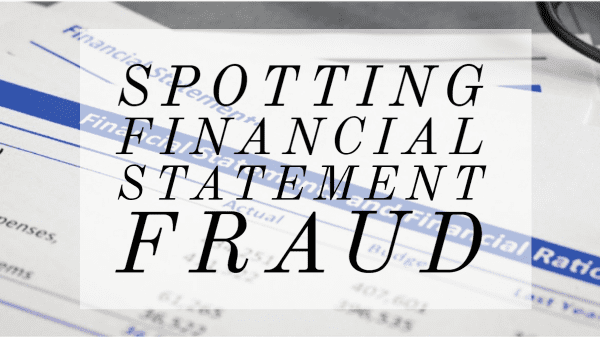
The benefits of financial statement fraud seem obvious: as with everything else in business, it’s all about the money.
Globally, according to the Association of Certified Fraud Examiners (ACFE), businesses lose more than $3.5 trillion across the globe every single year to fraud, both internal and external.
Financial statement fraud, however, offers numerous opportunities for deception.
Among these are fictitious or overstated sales & revenue, with invented revenue streams or artificially inflated sales from fake customers, or exaggerated sales to real customers; and asset value manipulation, which involves substituting capital expenditures for operating expenditures, listing fictitious assets on a statement, or overstating the value of actual assets.
There’s also inflated company valuation, one of the more nebulous and common forms of fraud, precisely because it’s difficult to detect and can be a simple mistake or misjudgment rather than a crime. Nonetheless, it is highly dangerous and can result in huge profits from investors or severe punishment if detected by the Securities & Exchange Commission (SEC) or other regulators.
Next up is phantom revenue, defined as income and assets not based on real sales, services, or manufacturing. Consignment items can be listed as already sold; sales may be listed as paid when still pending; prebilling can be filled in for future sales; and past due accounts can be reinvoiced to look like new charges.
Altered accounting methods are perhaps the easiest way to commit financial statement fraud, as they can as simple as improperly writing off expenses or failing to disclose liabilities or obligations—or as complex as keeping two sets of books, posting false transactions to conceal revenue or mask embezzlement, or failing to disclose transactions through subsidiaries, partners, or other related parties.
These were only a sampling of most common forms of financial statement fraud. A clever executive or owner, one with a deep knowledge of the company and the regulatory environment in which it operates, can find many ways to manipulate financial statements for personal gain or for the ‘good’ of the organization.
This is an excerpt from the Credit and Finance department feature in the July/August 2021 issue of Produce Blueprints Magazine. Click here to read the whole issue.
The benefits of financial statement fraud seem obvious: as with everything else in business, it’s all about the money.
Globally, according to the Association of Certified Fraud Examiners (ACFE), businesses lose more than $3.5 trillion across the globe every single year to fraud, both internal and external.
Financial statement fraud, however, offers numerous opportunities for deception.
Among these are fictitious or overstated sales & revenue, with invented revenue streams or artificially inflated sales from fake customers, or exaggerated sales to real customers; and asset value manipulation, which involves substituting capital expenditures for operating expenditures, listing fictitious assets on a statement, or overstating the value of actual assets.
There’s also inflated company valuation, one of the more nebulous and common forms of fraud, precisely because it’s difficult to detect and can be a simple mistake or misjudgment rather than a crime. Nonetheless, it is highly dangerous and can result in huge profits from investors or severe punishment if detected by the Securities & Exchange Commission (SEC) or other regulators.
Next up is phantom revenue, defined as income and assets not based on real sales, services, or manufacturing. Consignment items can be listed as already sold; sales may be listed as paid when still pending; prebilling can be filled in for future sales; and past due accounts can be reinvoiced to look like new charges.
Altered accounting methods are perhaps the easiest way to commit financial statement fraud, as they can as simple as improperly writing off expenses or failing to disclose liabilities or obligations—or as complex as keeping two sets of books, posting false transactions to conceal revenue or mask embezzlement, or failing to disclose transactions through subsidiaries, partners, or other related parties.
These were only a sampling of most common forms of financial statement fraud. A clever executive or owner, one with a deep knowledge of the company and the regulatory environment in which it operates, can find many ways to manipulate financial statements for personal gain or for the ‘good’ of the organization.
This is an excerpt from the Credit and Finance department feature in the July/August 2021 issue of Produce Blueprints Magazine. Click here to read the whole issue.



